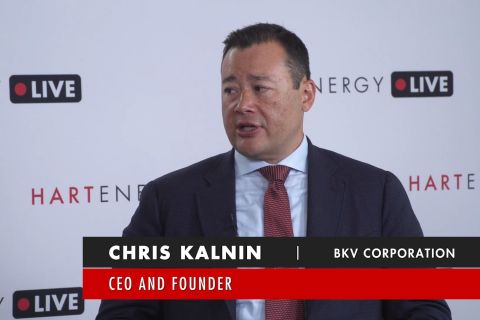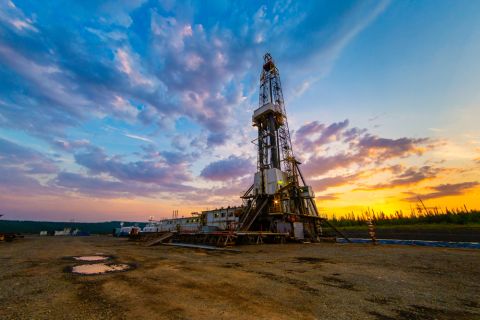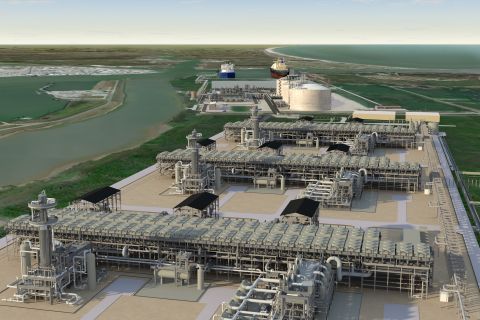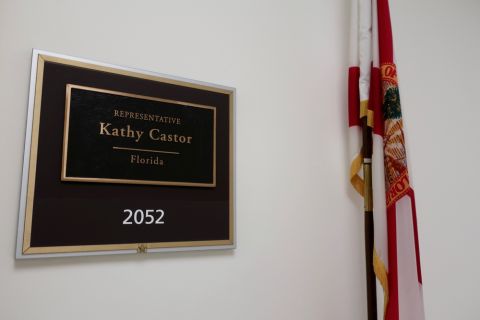Presented by:
Elected to the Texas Railroad Commission for the first time in November 2020, Jim Wright is a fifth-generation rancher who surprisingly unseated the incumbent and gained the voters’ attention with his emphasis on transparency and ethics within the energy industry and peripheral to it. Oil and Gas Investor had the opportunity to discuss with him some of the more sensitive issues in connection with the Winter Storm Uri disaster.
Do you believe that the Texas Legislature assumes the Railroad Commission has a disproportionate responsibility for resolving Electric Reliability Council of Texas’ (ERCOT) failures last year?
Jim Wright: Possibly. I think legislators heard a narrative that the underlying failure of the grid was natural gas, and to some extent, they zeroed in on that in their subsequent legislation. The natural gas system could have performed better, but I think to place the bulk of the blame on the doorstep of our natural gas industry was perhaps a convenient sidestep.
Clearly a whole host of issues contributed to the events of last February. Some of those, such as weatherization of electrical power plants, stemmed from ERCOT and the power generators themselves. Many of the issues that were the result of process failures in February were addressed in Senate Bill 3, but there are some overarching issues as it relates to our Texas electrical grid that remain unresolved namely the underlying and systemic imbalances in our market structure.
Look, I understand the Legislature has a tough job after an event like Winter Storm Uri. The legislators must cobble together information to construct mandates for an agency or agencies to solve an extremely complex problem, all in a limited amount of time. Imagine trying to coordinate a single piece of legislation to direct two state agencies and one quasi state agency to work together flawlessly—it must be very difficult.
That said, I think both industry and the Railroad Commission (RRC) made it abundantly clear that natural gas played a redeeming role in Winter Storm Uri; not one of fault.
How would you rate the Railroad Commission’s statutory ability to address and solve ERCOT’s problems?
JW: The RRC has primary regulatory jurisdiction over the oil and natural gas industry, pipeline transporters, the natural gas and hazardous liquid pipeline industry, natural gas utilities, the LPG industry, and coal and uranium mining operations. In addition, the RRC has exclusive original jurisdiction over natural gas utility service rates in certain parts of Texas but has no jurisdiction over the commodity price of oil or natural gas, which is wholly market-determined. Most importantly for this question, however, the RRC has absolutely no jurisdiction over the regulation of the generation, transmission or distribution of electricity in Texas. In short, the RRC has no statutory authority to address or solve the problems encountered or created by ERCOT. The RRC can, however, work to ensure that certain natural gas facilities are properly designated as critical and also weatherized so that the flow of natural gas to electrical generating facilities is predictable and sufficient.
RELATED:
Fatal Flaws: Is ERCOT Still Broken?
Is the larger issue in Texas a market-structure issue exacerbated by renewable energy tax incentives that have virtually eliminated competitiveness for thermal generation in the ERCOT market?
JW: Absolutely, yes. This is one of the underlying issues that I believe caused the downward spiral of blackouts during Winter Storm Uri. Wind and solar power generation is increasingly augmenting our power portfolio, which can be a good thing. In fact, the Texas Legislature effectively guarantees that wind and solar can supply up to 20% of the electrical generation without any competition. That means when the wind is blowing and the sun is shining, thermal electrical generation sources like natural gas and coal have to come offline, making it difficult for those industries to compete. That is one part of the problem. The other is that, due to federal incentives, wind and solar operations can discount the cost of the electricity that they provide and still turn a profit.
It is this combination of state policy and federal tax incentives that best explains the absence of new gas-fired electrical generation facilities constructed in Texas in the last few years, even though the power needs in the state have increased dramatically. All power generation sources need to be on a level playing field to provide actual competition. When the sun is shining and the wind is blowing, having that renewable power generation is a benefit to Texas. However, since the renewables are at the mercy of the weather, they cannot be counted on to be there whenever needed. For that reason, nothing beats the instant-on reliable power that natural gas provides.
Does the Railroad Commission have statutory authority to mandate weatherization to/for the natural gas industry?
JW: Yes. Two specific pieces of legislation, House Bill 3648 and Senate Bill 3, collectively mandate the RRC to designate certain natural gas facilities as critical and require those facilities to weatherize. The proposed critical designation rule and corresponding forms were recently adopted at a Nov. 30, 2021, RRC conference after extensive workshops and comment periods. Much of the Senate Bill 3 requirements will be completed in 2022, including rulemaking for weatherization for critical natural gas facilities.
However, while we have the authority to mandate weatherization requirements, the RRC can’t require or force production. I mentioned this at the most recent open meeting, and I continue to emphasize the need for electrical generators to secure firm gas supplies and transportation. I believe the best safeguard against extreme weather events, whether winter storms, hurricanes or summer heat, is an abundance of gas storage. Storage in salt caverns or depleted fields is advantageous in these situations, because unlike gas from the wellhead, gas from storage has already been processed and is ready for use.
So if that weatherization mandate is enforced, won’t that further erode the competitiveness between renewable and thermal generators to the benefit of the renewable industry?
JW: It certainly could. I don’t know if wind and solar are being made to weatherize and, if so, what the cost of that weatherization might be. I do know that natural gas storage facilities in Texas did a fantastic job of weatherizing prior to this year, and they performed flawlessly during Winter Storm Uri. Because it can have a serious financial effect on individual wells, it simply doesn’t make sense to require full weatherization on marginal assets, such as oil wells that only provide small volumes of casinghead gas or gas wells near their economic limit.
The critical designation rule addresses this issue by dividing the natural gas facilities in Texas into three separate groups: (1) “Supercritical” natural gas facilities, which supply approximately 80% of the daily gas required in Texas, are so important that they will not be allowed to opt out of the weatherization rules; (2) “Non-critical” natural gas facilities, which produce little to no natural gas and are thus automatically exempt from the weatherization requirements, provide good opportunities for initial load shed during an extreme weather event; and finally (3) “Marginally-critical” natural gas facilities, which may choose to request to opt out of the weatherization rules, will have to provide the RRC with a reasonable basis and justification for doing so.
Do you think there should be some form of capacity market for at least firm supplies on a peak demand day on ERCOT?
JW: While this question is well outside the RRC’s jurisdiction as an oil and gas regulator, I do think there should be at least some sort of incentivization for power generators to contract for firm supply and transport for peak demand volumes, at least during the winter months.
I understand that PUC (Public Utilities Commission) is looking at this issue and reviewing potential solutions to address these concerns. I have already begun to put wheels in motion to enhance the market for our natural gas to ensure electricity is available for distribution onto the grid while further utilizing gas that is currently flared.
I first wrote about this in an op-ed published by the Houston Chronicle back in August. Since that time, I have been working with Congressman Michael Burgess (TX-26) on legislation (H.R. 6146) The Stranded Gas Recovery & Utilization Act to further strengthen our ability to get natural gas to market.
This isn’t simply a Texas problem. Just recently, New England’s power grid operator raised concerns that several issues, including natural gas pipeline constraints, could impact the area’s power system.
Recommended Reading
BKV CEO: Texas Grid Needs More Combined Cycle NatGas Plants
2024-04-12 - BKV CEO Chris Kalnin dives into the "core issue" of Texas' renewable grid and how the company is increasing production as the the largest producer in the Barnett Shale, in this Hart Energy Exclusive interview.
Tinker Associates CEO on Why US Won’t Lead on Oil, Gas
2024-02-13 - The U.S. will not lead crude oil and natural gas production as the shale curve flattens, Tinker Energy Associates CEO Scott Tinker told Hart Energy on the sidelines of NAPE in Houston.
Segrist: The LNG Pause and a Big, Dumb Question
2024-04-25 - In trying to understand the White House’s decision to pause LNG export permits and wondering if it’s just a red herring, one big, dumb question must be asked.
DUG GAS+: Chesapeake in Drill-but-don’t-turn-on Mode
2024-03-28 - COO Josh Viets said Chesapeake is cutting costs and ready to take advantage once gas prices rebound.
Commentary: Fact-checking an LNG Denier
2024-03-10 - Tampa, Florida, U.S. Rep. Kathy Castor blamed domestic natural gas producers for her constituents’ higher electricity bills in 2023. Here’s the truth, according to Hart Energy's Nissa Darbonne.






